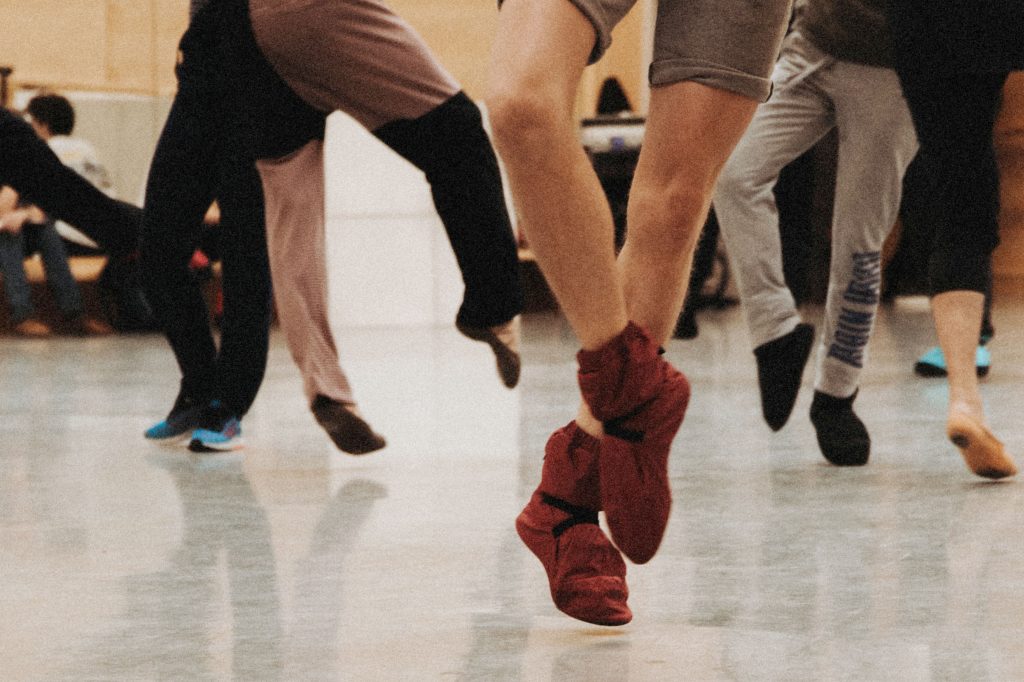
An inspiring view from one of the world’s leading immersive theatre pioneers Peter Holst-Beck:
- Immersive experiences change people
- Immersive experiences can be simple, human, and low cost
- Everyone in your organization can and should create immersive experiences
- Peter’s 6 rules for organizations to creatre more immersive experiences
- (The picture above isn’t of Peter, by the way. To see what Peter looks like, visit this page)
A COUPLE OF WEEKS AGO in the morning I was at the Metro and arrived at my destination in central Copenhagen. The weather was cloudy, the air was misty and thick. Everyone was walking silently around on their way to job. Some were checking their mobile phones. Some really weren’t awake yet. They were all running on autopilot. Everything was safe, normal, like any other day.

Suddenly on the staircase on my way up from the Metro I heard a loud voice, breaking the silence.
The voice became louder as I approached the top. I saw a homeless man with a small bag of all his belongings beside him. I looked up from my mobile – so did a lot of others. He had a huge beard, which hadn’t seen a scissor for ages. His clothes were old and totally outworn. sSme of his teeth were missing. But he had the most beautiful voice and was proclaiming a poem in French. He used fine gestures as he was reciting and a bunch of people stood still and listened for a moment. I joined them, then flipped him a coin and was on my way again.
That happened weeks ago now, and it only lasted a few minutes. And yet this tiny episode has stayed with me. Why? What happened there? Why do I have this picture in my head and how come it affected me so?
I think the answer might be: because it was an immersive, interactive experience. Suddenly I was thrown out of my daily routine and was confronted with something that made me think, made me curious and made me wonder how stereotyped most of our thinking is.
First I heard him. Then I saw him. He gave me something – his performance of that poem. Then, I interacted with him by flipping him a coin. In return I received a huge toothless smile, showing me his gratitude.
Who was that man? Why did he recite a poem? And why did he do it in French? What was his background? I wanted to know more!
Why Do Some Small Events Have Huge Impacts?

It was such a small thing that happened, but the impact has been huge. Since that incident, I have started to listen to French music and have read some poetry. I mean – come on – who’d have thought I’d have done that a month ago?! But that homeless man had changed something in me. He’d made me curious, made me want to explore more and experience more. In some way, he’d transformed me.
Since you’re on the WXO website, you already know that immersive experiences can change hearts, minds and actions. They can change how people perceive brands. They can change how likely people are to buy products. To effect this sort of change, you know that you have to break people from their routines and open their eyes.
That’s the aim of a lot of today’s large scale experiences. Flash-mobs, for instance, when people around you suddenly burst out singing, playing music, and dancing. They’re usually a great experience, memorable, and so they’re used for branding and marketing. They take a lot of planning and often quite a lot of resources to make them work. Are they worth it? Yes, I believe so. Do people get personally involved? Not really. Can you do a better job with less resources? Yes!
The Elements of Immersive

Think back to when you are last travelling, what do you remember? The food, the hotel, the swimming pool or the one time, when you came across some locals, who greeted you, told you some local stories and perhaps invited you home for a glass of wine. I’ll bet you would remember the last experience. You were suddenly immersed into another life, another story, you had visuals you don’t normally see, you had new smells, and some nice interaction. You suddenly felt you were being a part of it. Perhaps you were transformed and made new friends?
Immersive theatre experiences contains all of these key elements:
- storytelling,
- impromptu moments,
- interaction,
- personal contact,
- imagining,
- sharing knowledge,
- and therefore transformation.
I believe experiences that contain these elements, as long as each moment is cleverly planned, can brand anything, anytime, everywhere.
Are People Intimidated By Immersive Theatre?

I have created several quite big immersive theatre experiences. For the last five years, I’ve been in charge of the Hamlet Live experience at Kronborg Castle.
We have around 320.000 guests during the summer and have of course made a lot of questionnaires about the event. The conclusion is extremely clear. No, people don’t feel intimidated!
Looking at the feedback from those five years, it’s also clear that people love to be challenged a bit, they love new, unexpected moments – as long as they feel safe. Some find it more comfortable being spectators instead of interactors, but that’s okay. They still have a huge experience to remember, that will make them come back. We even raised the ticket prices by 50% but nevertheless we never had so many guests. So the conclusion must be: immersive theatre works.
Everyone Is A Special And Unique Individual

Hold this thought in your mind for a moment – that everyone is a special and unique individual – and then think how small an immsersive experience can be. An immersive experience doesn’t have to be a grand spectacle like ‘Hamlet Live’.
An immersive experience can be made on a very small, personal, even intimate level. Yet many companies prevent immersive experiences from happening by too tightly trying to control everything too tightly. They demand a certain dress code of their employees. They teach them to say the same lines. They show them how to smile in the ‘proper’ way.
But if you do that, where are your employees’ personalities, their uniqueness? Doesn’t this tight control often lead to boring outcomes? Too often, yes! It’s one thing to make people feel comfortable in a safe, stereotypical environment. But will people leave your place with an experience to remember?
No – they’ll have forgotten everything as soon as the leave the doorway.
Six Things You Can Do Today To Enable More Immersive Experiences

So – what can you do?
- Allow your staff to be individual in both behavior and clothing.
- Allow the company, the shop, the museum, you name it, to be special.
- Train your staff to be good storytellers, to be brilliant at sharing knowledge.
- Let your staff have a good time and lots of fun on a daily basis. Let them sing, play some guitar or whatever, make hidden rooms and secret doorways, perhaps with certain smells where they can explore new products, give them secret passwords that they need to tell another staff member to get a discount on a product.
- Let the customers explore, interact and be immersed into this special world that you – and your staff – create.
- Most important is the human interaction where people feel they are heard and seen and unique.
Do You Really Have To Employ Actors?

That last point, number six: what I mean is that to have an immersive experience you don’t necessarily need to think in terms of actors and performers. Immersive experience planning might need some professional guidance at the beginning – actually, there’s no doubt that this is a very good idea. But creating an immersive experience is really about making it possible, easy even, for human beings to connect with other human beings.
The only limit to what’s possible is your imagination. The best place to start? Try some things out quickly through rapid prototyping, and see if they work.
Everyone can be taught the simple but highly valuable skills of immersive theatre. Every organization can free up their people to exercise their innate skills to engage, tell stories, create a memorable moment.
If you want to transform someone – how they think, what they do, what they remember – the best way to do that is through an immersive experience – just as the homeless man connected with me, that day at the Metro in Copenhagen, as he read French poetry.
If you want to transform your staff, your audience, your customers, the best strategy, I believe, is to create and stage moments of immersive theatre, anywhere and everywhere.
About The Author
Peter is an actor, director, producer and immersive experience designer. When he was Chief of Entertainment at the world’s oldest amusement park, Bakken, he developed ‘Korsbaek’, an interactive and immersive attraction based on one of Denmark’s most beloved TV series, Matador, which was set in World War Two. Peter has created several immersive theatre projects within the Danish National Museum. In 2016 he created ‘Hamlet Live’ at Kronborg Castle. Co-author of the paper ‘Hamlet Live – The 7 I’s Experiential Strategy for Heritage Visitor Attractions’, Peter is currently working on the development of a new attraction for Copenhagen, the World of H.C. Andersen.





